Heterocycles: Synthesis, Catalysis, Sustainability, and Characterization
Teresa
M.V.D. Pinho E Melo (Editor)
Visit to download the full and correct content document: https://ebookmass.com/product/heterocycles-synthesis-catalysis-sustainability-and-ch aracterization-teresa-m-v-d-pinho-e-melo-editor/
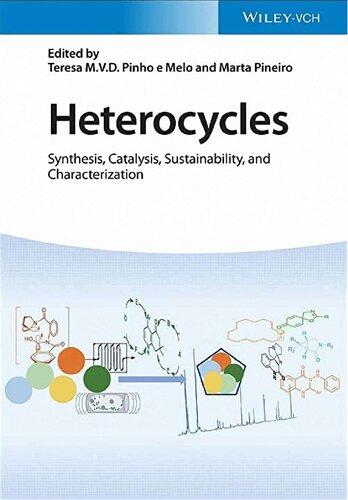
More products digital (pdf, epub, mobi) instant download maybe you interests ...
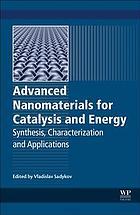
Advanced nanomaterials for catalysis and energy: synthesis, characterization and applications Sadykov
https://ebookmass.com/product/advanced-nanomaterials-forcatalysis-and-energy-synthesis-characterization-and-applicationssadykov/
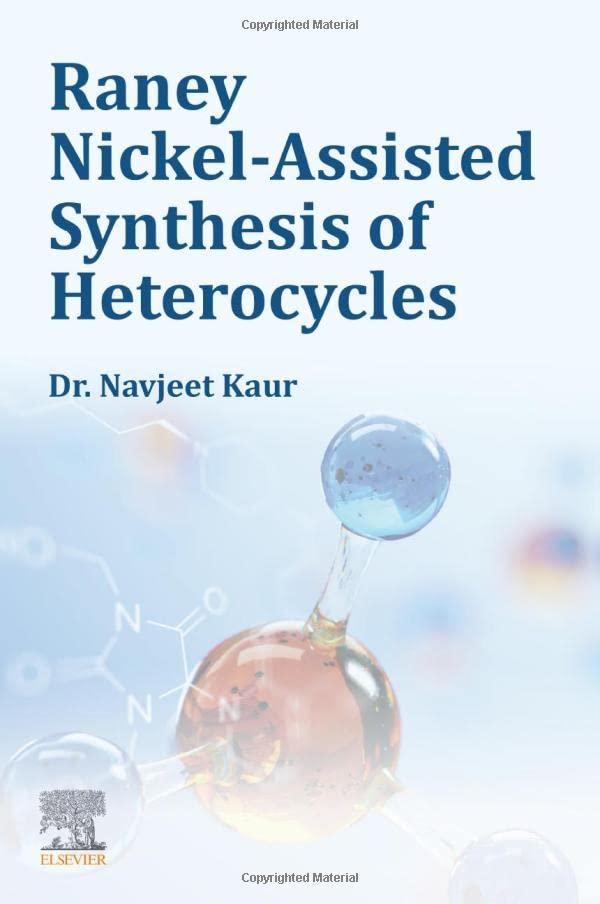
Raney Nickel-Assisted Synthesis of Heterocycles Navjeet Kaur
https://ebookmass.com/product/raney-nickel-assisted-synthesis-ofheterocycles-navjeet-kaur/
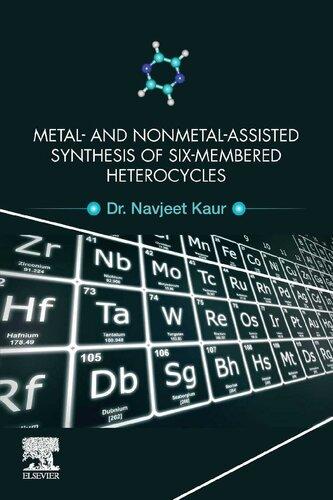
Metal and Nonmetal Assisted Synthesis of Six-Membered Heterocycles Navjeet Kaur
https://ebookmass.com/product/metal-and-nonmetal-assistedsynthesis-of-six-membered-heterocycles-navjeet-kaur/
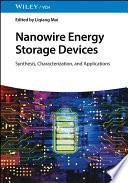
Nanowire Energy Storage Devices: Synthesis, Characterization and Applications Liqiang Mai
https://ebookmass.com/product/nanowire-energy-storage-devicessynthesis-characterization-and-applications-liqiang-mai/
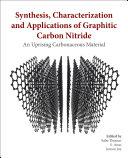
Synthesis, Characterization, and Applications of Graphitic Carbon Nitride Sabu Thomas
https://ebookmass.com/product/synthesis-characterization-andapplications-of-graphitic-carbon-nitride-sabu-thomas/
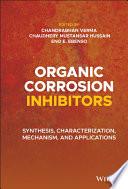
Organic Corrosion Inhibitors: Synthesis, Characterization, Mechanism, and Applications Chandrabhan Verma
https://ebookmass.com/product/organic-corrosion-inhibitorssynthesis-characterization-mechanism-and-applicationschandrabhan-verma/

N-Sulfonated-N-Heterocycles:
Synthesis, Chemistry, and Biological Applications Galal H. Elgemeie
https://ebookmass.com/product/n-sulfonated-n-heterocyclessynthesis-chemistry-and-biological-applications-galal-h-elgemeie/
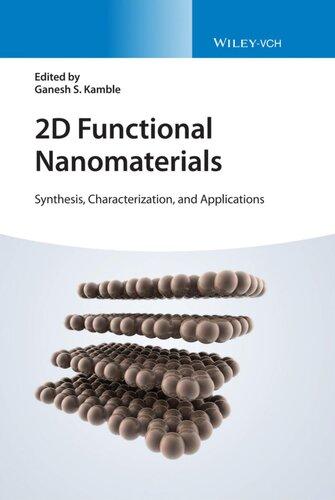
2D
Functional Nanomaterials: Synthesis, Characterization and Applications Ganesh S. Kamble (Ed.)
https://ebookmass.com/product/2d-functional-nanomaterialssynthesis-characterization-and-applications-ganesh-s-kamble-ed/
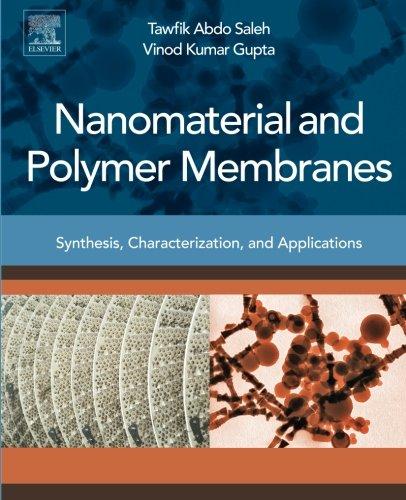
Nanomaterial and Polymer Membranes. Synthesis, Characterization, and Applications 1st Edition Tawfik Abdo Saleh
https://ebookmass.com/product/nanomaterial-and-polymer-membranessynthesis-characterization-and-applications-1st-edition-tawfikabdo-saleh/

Heterocycles

Heterocycles
Synthesis,Catalysis,Sustainability,andCharacterization
EditedbyTeresaM.V.D.PinhoeMeloandMartaPineiro

Editors
Prof.TeresaM.V.D.PinhoeMelo UniversityofCoimbra CoimbraChemistryCentre(CQC) DepartmentofChemistry
RuaLarga
3004-535Coimbra
Portugal
Prof.MartaPineiro UniversityofCoimbra CoimbraChemistryCentre(CQC) DepartmentofChemistry
RuaLarga
3004-535Coimbra
Portugal
CoverImage: CourtesyofTeresaM.V.D. PinhoeMeloandMartaPineiro
Allbookspublishedby WILEY-VCH arecarefully produced.Nevertheless,authors,editors,and publisherdonotwarranttheinformation containedinthesebooks,includingthisbook, tobefreeoferrors.Readersareadvisedtokeep inmindthatstatements,data,illustrations, proceduraldetailsorotheritemsmay inadvertentlybeinaccurate.
LibraryofCongressCardNo.: appliedfor
BritishLibraryCataloguing-in-PublicationData Acataloguerecordforthisbookisavailable fromtheBritishLibrary.
Bibliographicinformationpublishedby theDeutscheNationalbibliothek TheDeutscheNationalbibliotheklists thispublicationintheDeutsche Nationalbibliografie;detailedbibliographic dataareavailableontheInternetat <http://dnb.d-nb.de>
©2022WILEY-VCHGmbH,Boschstraße12, 69469Weinheim,Germany
Allrightsreserved(includingthoseof translationintootherlanguages).Nopartof thisbookmaybereproducedinanyform–by photoprinting,microfilm,oranyother means–nortransmittedortranslatedintoa machinelanguagewithoutwrittenpermission fromthepublishers.Registerednames, trademarks,etc.usedinthisbook,evenwhen notspecificallymarkedassuch,arenottobe consideredunprotectedbylaw.
PrintISBN: 978-3-527-34886-2
ePDFISBN: 978-3-527-83199-9
ePubISBN: 978-3-527-83201-9
oBookISBN: 978-3-527-83200-2
Typesetting Straive,Chennai,India PrintingandBinding
Printedonacid-freepaper

Contents
Preface xi
1HeterocyclicCompoundsinEnantioselectivePhotochemical Reactions 1
NorbertHoffmann
1.1Introduction 1
1.2AsymmetricCatalysiswithChiralTemplates 2
1.3AsymmetricPhoto-EnzymeCatalysis 7
1.4AsymmetricPhotochemicalReactionsinCrystals 9
1.5CrystallineInclusionComplexes 12
1.6InclusioninZeolites 13
1.7MemoryofChirality 14
1.8ConclusionandPerspectives 15 References 16
2HeterocyclesviaDearomatizationReactions 27
AlexeyM.StarosotnikovandMaximA.Bastrakov
2.1Introduction 27
2.2AnnulationofHeterocyclesviaDearomativeCycloadditiontoArenes andHetarenes 28
2.2.1[3+2]Cycloaddition 28
2.2.2[4+2]Cycloaddition 36
2.2.3OtherCycloadditions 41
2.3IntramolecularAdditiontoAromaticDoubleBondsLeadingto Heterocycles 42
2.4DearomativeSpirocyclizations 45
2.5ConclusionandPerspectives 51 Acknowledgments 51 References 51

3StrategiesfortheSynthesisofHeterocyclicMacrocyclesand Medium-SizedRings 59
WilliamP.UnsworthandThomasC.Stephens
3.1Introduction 59
3.2HighDilutionandPseudo-HighDilutionMethods 61
3.2.1TraditionalHighDilution/SlowAdditionMethods 61
3.2.2Solid-SupportedMethods 65
3.2.3PhaseSeparation 65
3.3MethodsDesignedtoImpartMoreFavorableCyclization Conformations 67
3.3.1TheImportanceofConformationonMacrocyclization 67
3.3.2StructuralFeaturestoBiasCyclizationConformation 69
3.3.3TemplatedMacrocyclization 71
3.4Ring-ExpansionMethods 71
3.5Medium-SizedRings:SpecialCases 75
3.6ConclusionsandPerspectives 77 References 78
4OrganocatalysisinSyntheticHeterocyclicChemistry 85 ÁngelCores,MercedesVillacampa,andJ.CarlosMenéndez
4.1Introduction 85
4.2OrganocatalyticSynthesisofFive-MemberedHeterocycles 87
4.2.1PyrrolesandPyrrolidines 87
4.2.2FuranandBenzofuranDerivatives 89
4.3OrganocatalyticSynthesisofSix-MemberedHeterocycles 90
4.3.1Pyridines,Dihydropyridines,andPiperidines 90
4.3.2FusedPyridineDerivatives 98
4.3.3Pyrimidines 101
4.3.4PyranandFusedPyrans 101
4.4OrganocatalyticSynthesisofSeven-MemberedHeterocycles 104
4.4.1DiazepinesandFusedDiazepines 104
4.4.2ThiazepinesandFusedThiazepines 106
4.5OrganocatalyticSynthesisofPolyheterocyclic,Bridged,andSpiro Compounds 107
4.6ConclusionandPerspectives 111 Acknowledgments 111 References 111
5TransitionMetalCatalysisinSyntheticHeterocyclic Chemistry 117
DinaMurtinhoandM.ElisadaSilvaSerra
5.1Introduction 117
5.2Copper-CatalyzedSynthesisofHeterocycles 118
5.2.1FusedHeterocycles 118

5.2.2Five-andSix-MemberedN-andN,N-Heterocycles 120
5.2.3Five-andSix-MemberedN,O-Heterocycles 126
5.3Pd-CatalyzedHeterocycleSynthesis 127
5.3.1NitrogenHeterocycles 128
5.3.2OxygenHeterocycles 135
5.3.3N,O-Heterocycles 140
5.4ConclusionandPerspectives 142 Acknowledgments 142 References 142
6BiocatalyticSynthesisofHeterocycles 159 AlinaNastkeandHaraldGröger
6.1Introduction 159
6.2Three-MemberedRingHeterocycles 160
6.2.1N-Heterocycles 160
6.2.2O-Heterocycles 160
6.2.2.1HalohydrinDehalogenases 161
6.2.2.2FAD-DependentMonooxygenases 162
6.2.2.3Heme-DependentMonooxygenases 164
6.2.2.4Peroxygenases 166
6.3Four-MemberedRingHeterocycles 169
6.4Five-MemberedRingHeterocycles 171
6.4.1N-Heterocycles 171
6.4.1.1AliphaticHeterocycles 171
6.4.1.2Lactams 174
6.4.1.3AromaticHeterocycles 178
6.4.2O-Heterocycles 181
6.4.2.1AliphaticHeterocycles 181
6.4.2.2Lactones 184
6.4.2.3AromaticHeterocycles 190
6.4.3S-Heterocycles 194
6.5Six-MemberedRingHeterocycles 195
6.5.1N-Heterocycles 195
6.5.2O-Heterocycles 203
6.6ConclusionandPerspectives 203 References 203
7MulticomponentSynthesisofHeterocycles 215 CarolinaS.Marques,ElisabeteP.Carreiro,andAntónioP.S.Teixeira
7.1Introduction 215
7.2Three-MemberedRingHeterocycles 216
7.3Four-MemberedRingHeterocycles 219
7.4Five-MemberedRingHeterocycles 222
7.4.1Five-MemberedRingHeterocycleswithOneHeteroatom 223

7.4.2Five-MemberedRingHeterocycleswithTwoHeteroatoms 232
7.4.3Five-MemberedRingHeterocycleswithThreeandFour Heteroatoms 236
7.5Six-MemberedRingHeterocycles 237
7.5.1Six-MemberedRingHeterocycleswithOneHeteroatom 237
7.5.2Six-MemberedRingHeterocycleswithTwoHeteroatoms 243
7.5.3Six-MemberedRingHeterocycleswithThreeHeteroatoms 247
7.6Seven-MemberedRingHeterocycles 249
7.7ConclusionsandPerspectives 253 Acknowledgments 253 References 254
8HeterocyclicCompoundsfromRenewableResources 277 GiuseppeMele,SelmaE.Mazzetto,andDiegoLomonaco
8.1Introduction 277
8.2Three-,Five-,Six-,andSeven-MemberedRingHeterocyclesBasedon CNSL 278
8.2.1Oxiranes(Epoxides) 278
8.2.2Benzoxazines 281
8.2.3Cardanol-BasedLactones 284
8.2.4Cardanol-BasedAmphiphilicHeterocycles 284
8.2.5Fulleropyrolidines 285
8.2.6TriazolesandPyrimidineHybrids 286
8.3PorphyrinsandPhthalocyaninesDerivedfromCardanol-Based Precursors 286
8.3.1SynthesesofPorphyrins(Pps)andPhthalocyanines(Pcs)from Cardanol-BasedPrecursors 286
8.3.2ApplicationsofCardanol-DerivedPorphyrins(Pps)andPhthalocyanines (Pcs) 288
8.3.2.1Langmuir–BlodgettFilms 288
8.3.2.2SuperparamagneticFluorescentNanosystems 289
8.3.2.3CorrosionProtection 289
8.3.2.4OrganicLight-EmittingDiodes(OLEDs) 289
8.3.2.5PhotodynamicTherapy 290
8.3.2.6CompositesSemiconductor@SensitizerforEnhancingPhotocatalytic Processes 290
8.3.2.7Photo-ignitionofCarbonNanotubes/Ferrocene/PorphyrinUnderLED Irradiation 291
8.3.2.8IntercalationofPpsintoVesicularNanosystems 292
8.3.2.9NanomaterialsBasedonFe3 O4 andPhthalocyaninesDerivedfrom CNSL 292
8.4ConclusionsandPerspectives 293 Acknowledgments 293 References 293

9SynthesisofHeterocyclesinNonconventionalBio-based ReactionMedia 301
AntonV.Dolzhenko
9.1Introduction 301
9.2HeterocyclizationsinGlycerol 302
9.2.1SynthesisofFive-MemberedHeterocyclesinGlycerol 303
9.2.2SynthesisofSix-MemberedHeterocyclesinGlycerol 308
9.2.3SynthesisofSeven-MemberedHeterocyclesinGlycerol 312
9.3HeterocyclizationsinLacticAcid 313
9.3.1SynthesisofFive-MemberedHeterocyclesinLacticAcid 313
9.3.2SynthesisofSix-MemberedHeterocyclesinLacticAcid 315
9.4Heterocyclizationsin γ-Valerolactone 317
9.4.1SynthesisofFive-MemberedHeterocyclesin γ-Valerolactone 318
9.4.2SynthesisofSix-MemberedHeterocyclesin γ-Valerolactone 320
9.5Heterocyclizationsin2-Methyltetrahydrofuran 322
9.5.1SynthesisofFive-MemberedHeterocyclesin 2-Methyltetrahydrofuran 323
9.5.2SynthesisofSix-MemberedHeterocyclesin 2-Methyltetrahydrofuran 325
9.6HeterocyclizationsinMiscellaneousUnconventionalBio-based Media 327
9.7ConclusionandPerspectives 330 Acknowledgments 330 References 330
10MechanochemistryinHeterocyclicSynthesis 339 VjekoslavŠtrukilandDavorMargeti´c
10.1Introduction 339
10.2MechanosynthesisofN-Heterocycles 341
10.2.1Five-MemberedRingHeterocycles 341
10.2.2Six-MemberedRingHeterocycles 351
10.2.3Porphyrins 354
10.3MechanosynthesisofO-,S-,andOtherHeterocycles 355
10.3.1Three-MemberedRingHeterocycles 355
10.3.2Five-MemberedRingHeterocycles 356
10.3.3Six-MemberedRingHeterocycles 359
10.3.4Eight-MemberedRingHeterocycles 363
10.4ConclusionsandPerspectives 363 References 364
11FlowChemistry:SequentialFlowProcessesfortheSynthesis ofHeterocycles 371 PedroBrandão,MartaPineiro,andTeresaM.V.D.PinhoeMelo
11.1Introduction 371
11.2FlowSynthesisofHeterocycles 372

x Contents
11.2.1Three-MemberedRingHeterocycles 372
11.2.2Four-MemberedRingHeterocycles 374
11.2.3Five-MemberedRingHeterocycles 374
11.2.4Six-MemberedRingHeterocycles 384
11.2.5Seven-MemberedRingHeterocycles 390
11.3ConclusionsandPerspectives 391
Acknowledgments 391 References 391
12MatrixIsolationinHeterocyclicChemistry 401
JoséP.L.Roque,CláudioM.Nunes,andRuiFausto 12.1Introduction 401
12.2StructuralCharacterization 403
12.3UV-InducedPhotochemicalReactivity 412
12.4ThermalReactivity 424
12.5IR-InducedProcesses 429
12.6TunnelinginHeterocyclicChemistry 435
12.7ConclusionandPerspectives 444 Acknowledgments 445 References 445
13NMRStructuralCharacterizationofOxygenHeterocyclic Compounds 453
RicardoA.L.S.Santos,DianaC.G.A.Pinto,andArturM.S.Silva 13.1Introduction 453
13.2Three-MemberedHeterocyclicCompounds 454
13.3Four-MemberedHeterocyclicCompounds 459
13.4Five-MemberedHeterocyclicCompounds 466
13.5Six-MemberedHeterocyclicCompounds 477
13.6ChromeneandXanthene-RelatedCompounds 494
13.7ConclusionsandPerspectives 505 Acknowledgments 506 References 506
Index 525

Preface
Heterocyclicchemistryplaysacentralroleinorganicchemistry,beingthefieldwith thegreatestimpactintermsofapplications.Heterocyclesarewidelypresentinmany naturallyoccurringcompoundsandareparticularlyrelevantinthepharmaceutical andagrochemicalindustriesbesidesbeingimportantmaterialsinotherindustrial applications.Therefore,itdoesnotcomeasasurprisethatanimpressivenumber ofcontributionsonheterocyclicchemistryappeareachyearaimingatthedevelopmentofnovelandmoresustainablesyntheticmethodologiesandtoachievehigher structuraldiversitytomeetthedemandsofthevariousheterocycles’applications.
Theplanningofthebookhad Synthesis,Catalysis,SustainabilityandCharacterization asthemainguidelines.The SyntheticMethods includechaptersonselected “hottopics”coveringthestate-of-the-artonsyntheticapproachestoheterocycles. Thechoiceofthemeswasbasedontherelevanceofthetransformationswithregard tothehighpotentialalreadydemonstratedandprospectsfornewdevelopments. Theycomprisethefollowingtopics:chiralheterocyclesviaenantioselectivephotochemicalreactions,heterocyclesviadearomatizationreactions,andanoverview ofsyntheticstrategiestowardheterocyclicmacrocyclesandmedium-sizedrings. Specialfocuswasalsogivento CatalyticMethods withchaptersonorganocatalysis, transition-metalcatalysis,andbiocatalysis.
Atpresent,therelevanceofgreenchemistryisjustifiedbytheinclusionofselected topicson Sustainability inthecontextofthesynthesisofheterocycliccompounds. Multicomponentsynthesis,synthesisfromrenewableresources,synthesisinnonconventionalreactionmedia,mechanochemistry,andflowchemistryarecovered.
Thebookincludesachapterontheuseofmatrixisolationspectroscopyasatool forstructural Characterization andforunprecedentedmechanisticinsightson reactionsinvolvingheterocycliccompounds.Thefinalchapterisacomprehensive overviewonoxygenheterocycles Characterization byNMRspectroscopy,withgreat practicalutilityforthoseworkingwiththesescaffolds.
Thebookisaimedatadvanced-levelreadersandspecialistsintheareaofheterocyclicchemistry.Thisincludesresearchersfromacademiaandstudentsofadvanced coursesonOrganicChemistry,MedicinalChemistry,andGreenChemistry,aswell asresearchersinthefieldofFineChemicalIndustry.

xii Preface
Thisfeatureofhavingtopicscoveringcutting-edgeresearchonheterocyclicchemistrywasonlypossibleduetocontributionsfromanoutstandinginternationalteam of30authors,whicharegratefullyacknowledged,making Heterocycles–Synthesis, Catalysis,Sustainability,andCharacterization auniquebookthatwehopewill becomeareferenceintheareaofHeterocyclicChemistry.
UniversityofCoimbra,Coimbra 22March2022
TeresaM.V.D.PinhoeMelo MartaPineiro

HeterocyclicCompoundsinEnantioselectivePhotochemical Reactions
NorbertHoffmann
UniversitédeReimsChampagne-Ardenne,CNRS,ICMR,EquipedePhotochimie,UFRSciences,B.P.1039, Reims51687,France
1.1Introduction
Thepresentchapterdealswithdifferentkeytopics.Heterocycliccompoundsplaya centralroleinmanydomainsofchemistrysuchasthesearchofnewbiologically activecompoundsinpharmaceuticalandagriculturalchemistry[1].Also,many newmaterialssuchassemiconductingcompoundscontainheterocyclicmoieties[2].Inthesedomains,alargestructuraldiversityandmolecularcomplexity ishighlyneeded.Here,traditionalmethodsoforganicsynthesisfindtheirlimits. Photochemicalreactionsextendsuchlimits.Aselectronicexcitationcompletely changesthechemicalreactivityofcompoundsorwholefamilyofcompounds[3], products,whichcannotbesynthesizedbymoreconventionalmethodsbecome accessibleandareofhighinterestforapplicationinthefieldofbioactivecompounds[4,5].Furthermore,theoutcomeofknownreactions,especiallycatalytic reactions,canbeimprovedwhentheyarecarriedoutunderphotochemical conditions.Basedontheenormousquantityofrecentandpastresultsinthefield ofphotochemicalreactions,itmakessensetosubdividechemicalreactionsinto twoclasses:reactionsthatoccurintheelectronicgroundstateandreactionsin whichelectronicexcitationisinvolved.Fromtheeconomicandecologicalpointof view,photochemicalreactionsareparticularlyinteresting,sincemanyofthemcan becarriedoutwithoutanadditionalchemicalreagent.Thephotonisconsidered asatracelessreagent[6,7].Forthesereasons,thesereactionsarenowhighly appreciatedinchemicalandpharmaceuticalindustry[8–10].
Stereoselectivityalsoplaysacentralroleinorganicsynthesis.Biologicalactivity andmaterialpropertiesstronglydependonthestereochemistryofchemical compounds.Soonerorlater,almostallsynthesismethodswillfacethisproblem. Inthepast,photochemicalreactionshavebeenconsideredasbeinginherently stereo-unselective.Itwasthoughtthatthehighenergyuptakebylightabsorption inducesuncontrolledrelaxationprocessesthatleadtounselectivereactionswith largeamountsofdegradationeitherofthesubstratesorthephotoproducts[11].
Heterocycles:Synthesis,Catalysis,Sustainability,andCharacterization,FirstEdition. EditedbyTeresaM.V.D.PinhoeMeloandMartaPineiro. ©2022WILEY-VCHGmbH.Published2022byWILEY-VCHGmbH.

1HeterocyclicCompoundsinEnantioselectivePhotochemicalReactions
Inthisregard,itmusthoweverbepointedoutthatstereoselectiveandstereospecific photochemicalreactionshavebeenknownfromtheverybeginningofthisresearch area[12,13].Thecontrolleddissipationofthehighelectronicexcitationenergy inphotochemicalreactionsisthereasonforthehighstereoselectivityinsuch reactions[11].Inparticular,photochemicalreactionscanbeconductedenantioselectivelyinchiralsupramolecularstructures[14,15].Enantiopurecompoundsare obtainedindifferentways:theycanbeprepareddirectlyfromotherchiralprecursorssuchasnaturalproducts(“chiralpool”)orbyopticalresolutionusingdifferent typesofchromatographyorcrystallizationtechniques.Asymmetricsyntheses usingchiralauxiliaries,whichareremovedafterthestereoselectivereaction,also provideenantiopurecompounds.Asymmetriccatalysisandenzymaticcatalysis directlyyieldenantioenrichedcompounds.Achiralenantiopureenvironment inasupramolecularstructureorinacrystalmaybetheinductorofchiralityin asymmetricreactions.Inthepresentchapter,methodswillbediscussedleading directlytoenantiopureheterocycliccompoundsviaphotochemicalreactions.
1.2AsymmetricCatalysiswithChiralTemplates
Photochemicalsubstratesmaybecomplexedwithchiralstructuresthatinduce chirality[16].AtypicalexampleisdescribedinScheme1.1[17].Thequinolone derivative 1 carryingapyrrolidinemoietyundergoesanintramolecularcyclization leadingtothespirocyclicindolizidinecompound 6.Thesubstrateiscomplexedwith theenantiopureKempacidderivative(2)viahydrogenbondsbetweentwolactam
Scheme1.1 Enantioselectivesynthesisofaspirocyclicindolizidinecompoundinducedby aphotochemicalelectrontransfer.

1.2AsymmetricCatalysiswithChiralTemplates 3 moieties.Inthisarrangement,thepyrrolidineapproachesthereactioncenter mainlybyonediastereotopichalf-space.Inthiscomplex,theshieldinggroupacts alsoasanaromaticketonesensitizer(sens).Afterphotochemicalexcitationofthe latter,electrontransferfromthetertiaryaminemoietytotheketoneleadsfirsttoa radicalionpair 3 andafterprotontransfertointermediate 4 [18].Thenucleophilic α-aminoalkylradicalattackswith70%ofstereoselectivitytheelectrophilicdouble bondofthequinolonemoiety.Thus,anelectrophilicoxoallylradicalisgenerated affordingthediradicalintermediate 5.Thefinalproduct 6 resultsfromahydrogen transferfromtheketylradicaltotheoxoallylradical.Itmustbepointedoutthatin thepresentcasethisstepisfavoredbecauseitisanintramolecularprocess.Inthese radicalsteps,polareffectsplayanimportantrole[19–21].Inthecorresponding intermolecularstereoselectivereactions,theseeffectscontributeessentiallytothe efficiencyoftheseprocesses[18].Theintermolecularadditionoftertiaryamines toindolonederivativeswithanexocyclicelectron-deficientolefinicdoublebond hasbeencarriedoutwithsimilarKempacidderivatives[22].Inthiscase,however, rutheniumoriridiumcomplexeshavebeenusedasexternalphotoredoxcatalysts thatwereexcitedbyvisiblelightabsorption.
Usingasimilarchiralsensitizer,anintramolecular[2+2]photocycloadditionhas beencarriedoutwithhighenantioselectivity(Scheme1.2)[23].Thequinolone derivative 7 istransformed,undervisiblelightirradiation,intoacomplexpolycyclic compound 8 containingapyrrolidinemoiety.Itmustbepointedoutthatthe same[2+2]photocycloadditionisalsoinducedbyUVirradiationviadirectlight absorptionbutnochiralinductiontakesplace.Itisthereforenecessarytochoose asensitizerthatabsorbsinthevisibledomainofthelightspectrumtoensure enantioselectivity.Thethioxanthonederivative 9 absorbsinthevisiblelightregion andtransferitstripletenergytothecomplexedsubstrate(10).Again,thiscomplexationoccursviahydrogenbondsbetweenthetwolactamsofthesubstrateandthe Kempacidmoietyofthesensitizer.Inthisstructuretheolefinicdoublebondin thesidechainapproachesthereactivecenterofthequinolonealmostonlybyone
Scheme1.2 Constructionofapyrrolidinemoietyusinganenantioselective[2+2] photocycloaddition.Source:AlonsoandBach[23]/JohnWiley&Sons.

1HeterocyclicCompoundsinEnantioselectivePhotochemicalReactions diastereotopichalf-space.Similarasymmetricreactionshavebeenperformedwith 3-alkylquinolonescarryinga4-O alkenesidechain.Inthiscase,tetrahydrofuran moietiesareformed[24].
Thesubstratecanalsobecomplexedtoametalorastrongcoordinatingatom. Insuchacase,chiralityisinducedbyachiralligandsphere[25].Inthiscontext, chiralLewisacid 11 wasusedtocatalyzetheasymmetricintramolecular[2+2]photocycloadditionofthedihydropyridinonederivative 12 (Scheme1.3)[26].Inthis reaction,a δ-valerolactammoiety(13)isformed.BycomplexationwithaLewisacid, theabsorptionmaximumofcompound 12 isshiftedfrom290to350nm.Usingfluorescentlampswithanemission ��max = 366nm,complex 14 wasexcitedalmost exclusivelysincethenoncomplexedsubstrate 12 doesnotabsorblightinthisspectral range.Thus,theformationofracemicproductasbackgroundreactionissuppressed. Inthecomplex 14,theapproachoftheolefintothereactioncenteragainoccursby onediastereotopichalf-space.
Scheme1.3 EnantioselectiveLewisacidcatalysisofanintramolecular[2+2] photocycloadditionreaction.Source:BrimioulleandBach[26]/AmericanAssociationfor theAdvancementofScience.
α,α,α′ ,α′ -Tetraaryl-2,2-disubstituted1,3-dioxolane-4,5-dimethanols(TADDOLs, e.g. 23)arecapableofcomplexingnumeroussubstratesviahydrogenbonds[27]. Whenaphotochemicalsubstrateiscomplexedwithsuchcompounds,chiralitycan beinduced.Undertheseconditions,whentheflavonederivative 15 wasirradiated withthediphenylbutadiene 16,a[2+3]cycloadditiontookplace,leadingto compounds 17 and 18 (Scheme1.4)[28].AfterreductionwithNaBH4 ,compounds 19 and 20 wereisolatedingoodyields.Furthermore,themajordiastereoisomer 19 wasobtainedinhighenantioselectivity,andrecrystallizationledtoalmost enantiopuresamples.Thehighenantioselectivityofthephotochemicalreaction wasexplainedbythestructureofcomplex 21,whichstronglyfavorstheattackofthe olefinbyonlyonediastereotopichalf-space.Interestingly,whenthestericallymuch lessencumberedchiralalcohol 22 wasaddedinsteadoftheTADDOLcompound

Scheme1.4 Asymmetricsynthesisof( )-foveoglinAusingESIPT-promoted[2+3] cycloadditionwithaflavonederivative.Source:Wangetal.[28]/JohnWiley&Sons.
23,anefficientchiralinductionwasstillobserved.Thehighenantioselectivity observedwithhydrogenbondcomplexescanalsobeexplainedbythefactthat excitedstateintramolecularprotontransfer(ESIPT)playsakeyroleinthereaction mechanism[29].Infact,itwasshownthatthecycloadditionoccurredatthetriplet stateof 15 andthatmostprobablysingleelectrontransferisinvolved.Compound 19 wastransformedinto(+)-foveoglinA,whichistheenantiomerofanatural product.Thiscompoundfamilyplaysanimportantroleinmedicinalchemistryas theypossessanticancerandantiviralactivities.
Thecyclizationreactionoftwoalkynesandonenitrilefunctionisaconvenient methodforthepreparationofpyridinecompounds[30].Itcanbecarriedoutunder particularmildconditionswhensimpleandinexpensivecobaltcatalystssuchas 24 areused(Scheme1.5)[31].Underirradiationwithvisiblelight,theformation ofthecobaltacyclopentadieneintermediate 25 isaccelerated,andtheadditionof thenitrileleadingtotheintermediate 26 or 27 becomestherate-determiningstep. Theconsumptionofthenitrilesubstratebecomesthefirst-orderreactionstep. Undertheseparticularlymildconditions,avarietyofpyridinederivativeshave beensynthesizedpossessingfragilesubstituents(Figure1.1)[32].Asymmetric catalysiswasalsosuccessfullyperformed.Thecyclopentadienylligandinthe

Scheme1.5 Visiblelight-supportedcobalt-catalyzed[2+2+2]cycloadditionappliedtothe synthesisofpyridines.
Figure1.1 Pyridinesthathavebeensynthesizedundermildconditionsusing photochemicallypromotedcobalt-catalyzed[2+2+2]cycloaddition.
cobaltcatalystwasreplacedbychiralanalogs,bestresultsbeingobtainedwith catalyst 28 (Scheme1.6)[33].Withthisreactionaxialchiralitycanbeefficiently inducedasshownbythetransformationofcompound 29 intonaphthylpyridine 30.Similarreactionshavebeencarriedoutstartingfrom2-alkoxy-1-naphthonitriles 31 usingdifferentchiralcobaltcomplexesascatalysts.Eitherdiineswereused, leadingtotetracycliccompounds 32,or2equivofamonoalkynewereemployed, yieldingthecorrespondingtricyclicproducts 33.Inthispartofthestudy,the chiralcatalysts ent-28, 34, 35, 36,and 37 havealsobeentested.Thestudyof thistypeofchirality,atropisomerism,hasrecentlygainedparticularattentionin photochemistry[34].

Scheme1.6 Visiblelight-supportedasymmetric[2+2+2]cycloadditionusingchiralcobalt catalysts.
1.3AsymmetricPhoto-EnzymeCatalysis
Enzymecatalysisisageneralmethodtoproduceenantiomericallyenrichedorpure compounds.Manysuchtransformationsneedmulti-enzymesystemsthatcomplicatetheapplicationtoorganicsynthesis.Insomecases,however,thereplacement ofoneormoreenzymeactivitiesbyachemicaltransformationfacilitatesthetransformations.Astheytoleratealargevarietyofreactionconditions,photochemical reactionswereefficientlyappliedinthiscontext[35].
TheBaeyer–Villigermonooxygenase(BVMO)asymmetricallycatalyzesthe transformationofketonesintoestersorlactonesinthecaseofcyclicketones (Scheme1.7)[36].Thisenzymecontainsaflavinadeninedinucleotide(E-FADred ) unit,whichreducesmolecularoxygenintohydrogenperoxidecapableofoxidizingtheketonesubstrate.Theoxidizedflavinspecies(E-FADox )isreduced bynicotinamideadeninedinucleotidephosphate(H)(NADPH).Theresulting nicotinamideadeninedinucleotidephosphate(NADP+ )isreducedviaaglucose dehydrogenase-catalyzedreaction.Thissecondenzymeactivitycanbereplacedby addingflavin(FAD)tothereactionmixture.Thereducedformofthenonbound FADred iscapableofreducingtheenzyme-boundE-FADox .Attheexcitedstate, FADox (generatedbyirradiationwithvisiblelight)iseasilyreducedviaelectron transferfromasacrificialelectrondonorsuchasethylenediaminetetraaceticacid (EDTA).

β-D-glucose D-glucono1,5-lactone
Glucose dehydrogenase
BVMO:Baeyer–Villiger monooxygenase NADP+ NADPH
R:Adeninedinucleotide
E-FAD:EnzymeboundFAD
Coproduct
FADox FADred
R:Adeninedinucleotide
E-FAD:EnzymeboundFAD
BVMO:Baeyer–Villiger monooxygenase
Scheme1.7 Replacementoftheglucosedehydrogenasebyasimplephotoredoxcatalytic systembasedonnonboundFAD.
UndertheseconditionstheasymmetricBaeyer–Villigerreactionwascarriedoutwiththeracemic2-phenylcyclohexanone 38 (Scheme1.8)[37].Only the R-enantiomerwasoxidized,andthephenylcaprolactone 39 wasobtained inhighenantioselectivity.Theracemiccyclobutanonederivative 40 hasbeen transformedunderthesameconditions.Interestinglybothenantiomerswere oxidizedbutdifferentoutcomeswereobserved.The α-S-enantiomeryieldsthe bicyclicbutyrolactone 41,whereasthe α-R-enantiomeristransformedintoregioisomer 42.Bothcompoundsareformedinhighenantioselectivity.Compound 41 istheexpectedregioisomerofaBaeyer–Villigerreaction.Dependingonthe stereochemistryofthestartingketone,theenzymeactivityisthereforecapable ofdirectingtheregioselectivityofthereaction[38].Itshouldbepointedoutthat undersuchreactionconditions,hydrogenperoxideisgeneratedinlowstationary concentrationthatreducestheenzymedegradation[39].
Combinedphoto-andenzymecatalysiswasalsocarriedoutwithalcohol dehydrogenases(ADH)[40].TheseenzymesuseNAD(P)H/NAD(P)+ ascofactor[41].Inordertooptimizetheenzymeactivity,thiscofactorsystemmustbe regenerated[42].Oneofthehydroxylfunctionalitiesoftheachiraldiol 43 isdehydrogenatedtoanaldehydebyhorseliveralcoholdehydrogenase(HLADH)with molecularoxygen(Scheme1.9)[43].Cyclizationleadstothelactol 44,areversible step.InaseconddehydrogenationalsocatalyzedbyHLADH,thelactolisoxidized

Scheme1.8 Enzyme-catalyzedenantioselectiveBaeyer–Villigerreactionappliedtothe synthesisoflactones.Source:Hollmannetal.[37]/JohnWiley&Sons.
Scheme1.9 Enantiospecificoxidationoftheachiraldiol 43 to4-methyl-δ-valerolactone 45 usingaphotobiocatalyticprocess.Source:Rauchetal.[43]/RoyalSocietyofChemistry.
tothe4-methyl-δ-valerolactone 45,obtainedwithcompleteenantioselectivity. Inthesesteps,hydrogenistransferredtoNAD+ andNADHisformed.NAD+ is regeneratedbyhydrogentransfertooxygenleadingtohydrogenperoxide.Thisstep isphotocatalyzedbyflavinmononucleotide(FMN).Theirradiationwascarried outwithblueLED(��max = 465nm).Undersimilarreactionconditionsandusinga flavin-dependent“ene”-reductase,avarietyoflactamshavebeenobtainedinhigh enantioselectivity[44].
Thecombinationofenzymaticreactionswithphotochemical,inparticular photoredoxprocesses,offersnumerousperspectivesfororganicsynthesis[45]. Thiscombinationisaparticularlyefficientapproachinconnectionwithsustainable orgreenchemistry.Astheseprocessesarethebasisofphotosynthesisingreen plants,theyhavebeensuggestedofpotentialrelevanceforasustainablechemical industrybyG.Ciamicianmorethan100yearsago[46].Itwasthebeginningof greenchemistry[47]althoughithasbeenalmostforgottenoverthedecades.
1.4AsymmetricPhotochemicalReactionsinCrystals
Asymmetricsynthesisisoftenbasedonselectionofconformations.Anefficient methodtodothisistocarryoutreactionsatthecrystallinestate.Molecular

1HeterocyclicCompoundsinEnantioselectivePhotochemicalReactions symmetryandcrystallographyarestronglylinked[48].Particularlyimpressive photochemicalreactionshavebeenreportedwithachiralsubstratesthatcrystallize inSohnckespacegroups[49,50].Whenachiralcompoundscrystallizeinthese spacegroups,mostfrequently,oneenantiopureconformerispresentinsuch homochiralcrystals[51,52].
When α-ketoamides 46 areirradicatedatthesolidstate,thehydroxy-β-lactams 47 areobtainedinhighenantioselectivity(Scheme1.10)[53].Afterlightabsorption,a hydrogenatomistransferredfromanisopropylgrouptothe α-ketofunctionleading tothediradical 48.Radicalcyclizationyieldsthefinalproduct 47.Allthesereaction stepsoccurunderconformationalcontrolexertedbythecrystalenvironment. Inmostcases,enantiomericexcesses(ee)werehigherthan90%.Inthecaseof Ar = Ph,thesubstratecrystallizedinthechiralspacegroup P21 21 21 [54].Irradiation ofthehomochiralcrystalsyieldsproduct 47 (Ar = Ph)in93%ee,whichcrystallized inthesamespacegroup P21 21 21 .Bothenantiomershavebeenselectivelyprepared choosingthecorrespondinghomochiralcrystalsofthesubstrate.Undersimilar conditionstheachiral α,β-unsaturatedthioamide 49 wastransformedintothe thio-β-lactam 50 [55].Afterphotochemicalexcitation,ahydrogenwastransferred fromoneofthebenzylpositionsintothe β-positionofthecyclohexenemoiety(51). Radicalcombinationyieldsthefinalproduct 50.Thestartingproductcrystallizedin the P21 spacegroup,andwhenhomochiralcrystalswereirradiated,oneenantiomer of 50 wasobtainedinhighenantiomericexcess.Itisnoteworthythat,when compound 49 wasirradiatedinsolution,thesameproduct 50 wasisolatedbutas aracemicmixturealongwithsideproducts[56].Variousotherexamplesofthis approachtochiralcompoundshavebeenreported[57].
Scheme1.10 Synthesisof β-lactamsusingabsoluteasymmetricsynthesiswith homochiralcrystalsoftheachiralsubstrates.Eachenantiomerhasbeenselectively producedfromthecorrespondinghomochiralcrystalofthesubstrate.
Thismethodfortheproductionofonlyoneenantiomerwithoutexternalchiral inductionispartofabsoluteasymmetricsynthesis.Usingparticularcrystallization methods,e.g.seedingcrystallizationwiththedesiredhomochiralcrystal,the achiralstartingcompoundcanbeselectivelytransformedintoonlyoneofthe homochiralcrystals[58].Itshouldfurtherbepointedoutthatsuchsolid-statephotochemicalreactionscanalsobecarriedoutonlargerscalewhensuspensionsare irradiated[59].

1.4AsymmetricPhotochemicalReactionsinCrystals 11
Acertaincontrolofthecrystalsymmetrycanbeobtainedbyattachinga homochiralelementtothesubstrate.Inthiscase,thenumberofpossiblespace groupsisreducedto65(Sohnckegroups).Adefinedchiralenvironmentisthus createdaroundthephotochemicalsubstrate[48–51].Inordertoobtainenantiomericallypureorenrichedphotochemicalproducts,thechiralelementshouldnotbe covalentlybondedtothephotochemicalsubstrate[60].Inthiscontext,ammonium saltsofchiralaminesand α-ketoamide 52 carryingacarboxylatefunctionhave beenprepared,andthecrystallinephasewasirradiated(Scheme1.11)[61].In mostcases,theresultinghydroxyl β-lactams 53 havebeenobtainedinhighyield andenantioselectivity.Theoxooxazolidinederivatives 54 wereformedinminor amounts.Bothenantiomersofcarboxylates 53 or 54 havebeenobtainedasmajor stereoisomersdependingontheconfigurationofthechiralammoniumcation.The absoluteconfigurationofthecarboxylateshasnotbeendeterminedinthisstudy.
Scheme1.11 Synthesisof β-lactamsbyirradiationofcrystallinechiralammoniumsalts.
Source:Natarajanetal.[61]/AmericanChemicalSociety.
Asimilarnorbornene 55 derivativehasbeentransformedunderthesameconditions(Scheme1.12)[62].Uponirradiation,thecarbonylisaddedtothealkene functionleadingtothetriplet1,4-diradicalintermediate 56,whichisatypicalintermediateofthePaternò–Büchireaction[63].SuchintermediatesmayundergoC—C bondformationleadingtooxetanes.BondcleavageofthenewlyformedC—Obond (b)canalsotakeplaceregeneratingthestartingcompound.Thisreactionstepplays akeyroleinthestereoselectivePaternò–Büchireactioninsolution[11,64].However,inthepresentcase,aC—Cbond(a)ofthenorbornenemoietyiscleaved, yieldingthefinalproduct 57,abicyclicdihydrofuranderivative.Inmostcases,high stereoselectivitywasobserved.Thereactionisaphoto-Claisenrearrangement[65] withintersystemcrossingtakingplace.
Scheme1.12 Asymmetricphoto-Claisenrearrangementbyirradiationofcrystallinechiral ammoniumsalts.Source:Xiaetal.[62]/AmericanChemicalSociety.

1.5CrystallineInclusionComplexes
Aspointedoutearlier,TADDOLsareauxiliariesthatefficientlyinducechiralitywithoutbeingcovalentlybondedtothereactingmolecule[27].Using co-crystallizationofthesecompoundswithsubstratesofphotochemicalreactions isaninterestingstrategyforasymmetricsynthesis[66,67].CrystalsofTADDOLs arehoststructureswithcavitiesthatcanbefilledbyguestmolecules.When co-crystallizedwithaTADDOLderivativeina1:1ratio,thefuroicacidamide 58 undergoesenantioselectivelyphotocycloadditionyieldingthequinolinonecompound 59 (Scheme1.13)[68].Duetoitspolarmesomericstructure 60,theamide constitutesa6π systemwithbenzeneandfuranmoieties.Therefore,itundergoes conrotatoryphotocyclizationleadingto 61.Thefinalproduct 59 isformedviaa tautomerizationstep.Thesamereactionwascarriedoutwiththeacrylanilide derivative 62 (Scheme1.13).Co-crystalsofa1:1ratiowiththesameTADDOL havebeenirradiated.Again,thequinolinonecompound(63)wasobtainedinhigh enantiomericexcess.Guestmoleculescaninteractprincipallyintwodifferentways withtheTADDOLhostmatrix.Theycanapproachthehostmoleculeswiththeir polarface,whichmayleadtotheformationofhydrogenbonds.Thiswasobserved forthefuroicacidamide 58 (Figure1.2a).Guestmoleculesmayalsointeractwith thearylsubstituentsoftheTADDOLs.Insuchcases,vanderWaals, π–π-stacking,or
Scheme1.13 PhotocyclizationinTADDOLco-crystalsyieldingquinolonesinhigh enantioselectivity.Source:Todaetal.[68]/AmericanChemicalSociety.


Figure1.2 X-raystructuresofcompound 58 (a)and 62 (b)in1:1co-crystalswitha TADDOL(compareScheme1.13).
edge-to-faceinteractions[69]canbeobserved.Thismaybethecaseinthereaction ofcompound 62 (Figure1.2b).
Numerousphotochemicalreactionshavebeenperformedusingcyclodextrins inclusioncomplexes[15,70].Inwatersolution,cyclodextrinsformsuchcomplexes withavarietyoforganicmolecules.However,inmanycaseswhen β-cyclodextrin isused,theinclusioncomplexesarelesssoluble,andthecorrespondingsuspensions,powders,orfilmsareirradiated.Inthiscontext,asuspensionofthe1:1 complexof β-cyclodextrinandtheazepinone 64 hasbeenirradiatedwithUVlight (Scheme1.14)[71].Thephotochemicalproduct 65 washydrogenated,andthe correspondingbicyclic γ-butyrolactam 66 wasisolatedingoodyieldsandmoderate enantioselectivity.Similarresultshavebeenobtainedwhenfilmsoftheinclusion complexwereirradiated.Whenthephotochemicalreactionof 64 inthepresence of β-cyclodextrinwascarriedoutinsolution,followedbyhydrogenation, 66 was isolatedasaracemicmixture.Obviously,undertheseconditions,noinclusionof 66 takesplace.
-Cyclodextrin
Scheme1.14 Photocyclizationofthedihydroazepinone 64 aspartofaninclusion complexwith β-cyclodextrin.Source:Mansouretal.[71]/AmericanChemicalSociety.
1.6InclusioninZeolites
Zeolitesareinorganiccrystallineporousmaterialsthatabsorbsmall-or medium-sizedmoleculesdependingonthecavitysize[72].Theyarefrequently usedascatalysts.Concerningphotochemicalreactions,theyhavebeenusedasa

1HeterocyclicCompoundsinEnantioselectivePhotochemicalReactions
hoststructurefororganicmolecules[73,74].Thephotocyclizationofpyridones 67 tothebicyclic β-lactams 68 hasbeenperformedinsupercagesofMYzeolites,where Maredifferentalkalimetalions(Scheme1.15)[75].Inordertocreateachiral environment,inclusionintothesupercagesofMYzeoliteof( )-norephedrineor ( )-ephedrinetogetherwiththesubstrate 67 wascarriedout.Inordertoassure maximuminteractionwiththechiralinductor,theaminoalcoholswereusedin a10-foldexcess.IncasesoflargersubstituentsR,thebicyclic β-lactams 68 have beenobtainedwithenantiomericexcessesupto53%.Theconfinementofthe non-covalentlybondedchiralinductorwiththepyridonesubstratesreducesthe numberofconformers.Theproximityofthechiralinductordirectsthisselection inanenantioselectiveway.Itmustbepointedoutthatwhenthesamereactions werecarriedoutinsolution,almostnochiralinductionwasobserved.Thereaction wasalsoperformedwithpyridonesubstratesinwhichchiralaminederivatives werecovalentlybonded.Insuchcases,significantdiastereoselectivitywasobserved whencompoundswereabsorbedbyYzeolites.
Scheme1.15 Photochemicaltransformationofpyridones 67 tobicyclic β-lactams 68 co-absorbedwithchiralaminoalcoholsinYzeolites.Source:Sivasubramanianetal.[75]/ RoyalSocietyofChemistry.
1.7MemoryofChirality
Inmanystereoselectivereactions,thechiralinformationistransferredfromachiral center,forexample,achiralcarbonatom,tothereactioncenter[76].Theresulting productsareformedwithdiastereoselectivity.Insomecases,however,suchachiral centerisdestroyed,andthechiralinformationisconserved(memoryofchirality) inmoreorlessstableconformersorothernon-covalentinteractions.Inthisway, suchreactionsbecomestereo-orenantioselective.Suchphenomenaarepartof chiralmemoryeffects[77,78].Inthiscontext,theprolinederivative 69 hasbeen irradiatedinanacetone/watermixture(Scheme1.16)[79].Undertheseconditions, sensitizationoccursviatripletenergytransferfromphotochemicalexcitedacetone to 69.Intramolecularelectrontransferoccursfromthecarboxylatefunctionality tothephthalimidemoiety(70).Immediatedecarboxylationtakesplaceandan α-aminoalkylradical(71)isgenerated.Inthisreactionstep,thechiralinformation attheformerprolinemoietyislost.Radicalcyclizationleadstothefinalproduct

Scheme1.16 Observationofamemoryofchiralityeffectinadecarboxylative photocyclization.Source:Griesbecketal.[79]/JohnWiley&Sons.
72 withhighenantioselectivity.Itmustbepointedoutthatthechiralinformation wasconservedinrelativelyrigidconformationsandtransferredwithinversionof configuration.Thiseffectisexplainedbythefactthatthespinmultiplicitychanges inthisstep.Thetripletdiradical 73 istransformedintothefinalproductinitssinglet state 74.Radicalcombinationandintersystemcrossingconcomitantlyoccurwhen theradicalcarryingporbitalsinthediradicalareorthogonallyorientedasdepicted instructure 73 [80].Suchanarrangementincreasesspin–orbitcoupling.Asshown forthepresentandotherexamples,suchaninteractionhasasignificantimpacton thestereoselectivityofthesereactions[81].Inasimilarelectrochemicalreaction, whichtakesplaceatthesingletgroundstate,almostthesameenantioselectivity wasobservedbutwithretentionofconfigurationatthepyrrolidinemoiety[78,82]. Memoryofchiralityeffectshavebeenobservedinavarietyofphotochemical reactionsinvolvingradicalintermediates[83].
1.8ConclusionandPerspectives
Enantioselectivesynthesisofheterocycliccompoundsplaysanimportantrolein manydomainssuchasthesearchofnewbiologicallyactivecompoundsforusein medicineoragricultureorforthepreparationofnewmaterials.Photochemicalreactionssignificantlycontributetothisresearchfield.Currently,template-supported ororganometalliccatalysisisintensivelyinvestigatedwithconsiderableimpactin photoredoxcatalysisandphotosensitization[84,85].Enzymecatalysisrepresent anefficientmethodforthepreparationofenantiopurecompounds,amongthem manyheterocycliccompounds.Photochemicalreactionscansimplifythecatalytic systems.Inmanycases,theuseofcoenzymeshasbeenreplacedbysimplephotochemicalprocesses.Solid-statephotochemistryisanefficientmethodtocontrolthe equilibriumofconformersinanenantioselectiveway.Consequently,manyofsuch

1HeterocyclicCompoundsinEnantioselectivePhotochemicalReactions
reactionsarecarriedoutwithhighorcompleteenantioselectivity.Thisresearch domainprovidesinterestingperspectivesformaterialscience.Photochemistry ofheterocycliccompoundsalsocontributestobasicunderstandingofchemical reactivity.Memoryofchiralityisobservedinsomeofthesereactions.Forexample, theinfluenceofspin–orbitcoupling,theconformationalrigidityonenantioselectivity,hasbeendiscussedinthiscontext.Itshouldalsobepointedoutthat supramolecularstructures[14]orsupramolecularcatalysis[86]playakeyrolein mostofthesereactions.Amongthereactiondiscussedinthischapter,asymmetric photoredoxcatalyticreactionsandphotochemicallymodifiedenzymaticreactions arecertainlythemostattractivemethodsforapplicationinorganicsynthesis.Inthe contextofsustainablechemistry,photochemicalreactionwithcrystallinesubstrate isparticularlyinterestingsincenosolventisneeded[66,87].
References
1 (a)Dinges,J.andLamberth,C.(ed.)(2012). BioactiveHeterocyclicCompound Classes–Pharmaceuticals.Weinheim:Wiley-VCH.(b)Lamberth,C.and Dinges,J.(ed.)(2012). BioactiveHeterocyclicCompoundClasses–Agrochemicals. Weinheim:Wiley-VCH.(c)Krämer,W.,Schirmer,U.,Jeschke,P.,and Witschel,M.(ed.)(2012). ModernCropProtectionCompounds,2e,vol.1–3. Weinheim:Wiley-VCH.
2 Ostroverkhova,O.(ed.)(2019). HandbookofOrganicMaterialsforElectronicand PhotonicDevices,2e.Duxford:Elsevier.
3 (a)Klán,P.andWirz,J.(2009). PhotochemistryofOrganicCompounds Chichester:Wiley.(b)Buzzetti,L.,Crisenza,G.E.M.,andMelchiorre,P.(2019). Mechanisticstudiesinphotocatalysis. Angew.Chem.Int.Ed. 58:3730–3747. https://doi.org/10.1002/anie.201809984.
4 Lefebvre,C.,Fortier,L.,andHoffmann,N.(2020).Photochemicalrearrangementsinheterocyclicchemistry. Eur.J.Org.Chem. 2020:1393–1404.https://doi .org/10.1002/ejoc.201901190.
5 (a)Hoffmann,N.(2008).Photochemicalreactionsaskeystepsinorganicsynthesis. Chem.Rev. 108:1052–1103.https://doi.org/10.1021/cr0680336.(b)Bach,T. andHehn,J.P.(2011).Photochemicalreactionsaskeystepsinnaturalproductsynthesis. Angew.Chem.Int.Ed. 50:1000–1052.https://doi.org/10.1002/ anie.201002845.(c)Kärkäs,M.D.,Porco,J.A.,andStephenson,C.R.J.(2016). Photochemicalapproachestocomplexchemotypes:applicationinnaturalproductsynthesis. Chem.Rev. 116:9683–9747.https://doi.org/10.1021/acs.chemrev .5b00760.
6 Turro,N.J.andSchuster,G.(1975).Photochemicalreactionsasatoolinorganic synthesis. Science 187:303–312.https://doi.org/10.1126/science.187.4174.303.
7 (a)Hoffmann,N.(2012).Photochemicalreactionsofaromaticcompounds andtheconceptofthephotonasatracelessreagent. Photochem.Photobiol. Sci. 11:1613–1641.https://doi.org/10.1039/C2PP25074H.(b)Oelgemöller,M.,

Jung,C.,andMattay,J.(2007).Greenphotochemistry:productionoffinechemicalswithsunlight. PureAppl.Chem. 79:1939–1947.https://doi.org/10.1351/ pac200779111939.
8 Li,P.,Terrett,J.A.,andZbieg,J.R.(2020).Visible-lightphotocatalysisasan enablingtechnologyfordrugdiscovery:aparadigmshiftforchemicalreactivity. ACSMed.Chem.Lett. 11:2120–2130.https://doi.org/10.1021/acsmedchemlett .0c00436.
9 Bonfield,H.E.,Knauber,T.,Lévesque,F.etal.(2020).Photonsasa21stcentury reagent. Nat.Commun. 11:804.https://doi.org/10.1038/s41467-019-13988-4.
10 Michelin,C.,Lefebvre,C.,andHoffmann,N.(2019).Lesréactionsphotochimiquesàl’échelleindustrielle. Actual.Chim. 436:19–27.
11 Oelgemöller,M.andHoffmann,N.(2016).Studiesinorganicandphysical photochemistry–aninterdisciplinaryapproach. Org.Biomol.Chem. 14: 7392–7442.https://doi.org/10.1039/C6OB00842A.
12 Roth,H.D.(1989).Thebeginningsoforganicphotochemistry. Angew.Chem. Int.Ed. 28:1193–1207.https://doi.org/10.1002/anie.198911931.
13 (a)Rau,H.(1983).Asymmetricphotochemistryinsolution. Chem.Rev. 83:535–547.https://doi.org/10.1021/cr00057a003.(b)Inoue,Y.(1992). Asymmetricphotochemicalreactionsinsolution. Chem.Rev. 92:741–770. https://doi.org/10.1021/cr00013a001.ChiralPhotochemistry.(c)Inoue,Y.and Ramamurthy,V.(ed.)(2004). ChiralPhotochemistry.NewYork:MarcelDekker. (d)Griesbeck,A.G.andMeierhenrich,U.(2002).Asymmetricphotochemistry andphotochirogenesis. Angew.Chem.Int.Ed. 41:3147–3154.https://doi.org/ 10.1002/1521-3773(20020902)41:17<3147::AID-ANIE3147>3.0.CO;2-V. (e)Meggers,E.(2015).Asymmetriccatalysisactivatedbyvisiblelight. Chem. Commun. 51:3290–3301.https://doi.org/10.1039/C4CC09268F.
14 (a)Ramamurthy,V.andSivaguru,J.(2016).Supramolecularphotochemistry asapotentialsynthetictool:photocycloaddition. Chem.Rev. 116:9914–9993. https://doi.org/10.1021/acs.chemrev.6b00040.(b)Ramamurthy,V.and Mondal,B.(2015).Supramolecularphotochemistryconceptshighlightedwith selectexamples. J.Photochem.Photobiol.C 23:68–102.https://doi.org/10 .1016/j.jphotochemrev.2015.04.002.(c)Vallavoju,N.andSivaguru,S.(2014). Supramolecularphotocatalysis:combiningconfinementandnon-covalent interactionstocontrollightinitiatedreactions. Chem.Soc.Rev. 43:4084–4101. https://doi.org/10.1039/C3CS60471C.
15 Yang,C.andInoue,Y.(2014).Supramolecularphotochirogenesis. Chem.Soc. Rev. 43:4123–4123.https://doi.org/10.1039/C3CS60339C.
16 Brimioulle,R.,Lenhart,D.,Maturi,M.M.,andBach,T.(2015).Enantioselectivecatalysisofphotochemicalreactions. Angew.Chem.Int.Ed. 54:3872–3890. https://doi.org/10.1002/anie.201411409.
17 Bauer,A.,Westkämper,F.,Grimme,S.,andBach,T.(2005).Catalyticenantioselectivereactionsdrivenbyphotoinducedelectrontransfer. Nature 436: 1139–1140.https://doi.org/10.1038/nature03955.
18 (a)Fordetaileddiscussionofthemechanismsee:Bertrand,S.,Hoffmann,N., Humbel,S.,andPete,J.P.(2000).Diastereoselectivetandemaddition-cyclization

1HeterocyclicCompoundsinEnantioselectivePhotochemicalReactions reactionsofunsaturatedtertiaryaminesinitiatedbyphotochemicalelectron transfer(PET). J.Org.Chem. 65:8690–8703.https://doi.org/10.1021/jo001166l. (b)Hoffmann,N.andGörner,H.(2004).Photoinducedelectrontransferfrom N -methylpyrrolidinetoketonesandradicaladditiontoanelectron-deficient alkene. Chem.Phys.Lett. 383:451–455.https://doi.org/10.1016/j.cplett.2003 .11.045.(c)Hoffmann,N.,Bertrand,S.,Marinkovi ´ c,S.,andPesch,J.(2006). Efficientradicaladditionoftertiaryaminestoalkenesusingphotochemical electrontransfer. PureAppl.Chem. 78:2227–2246.https://doi.org/10.1351/ pac200678122227.(d)Griesbeck,A.G.,Hoffmann,N.,andWarzecha,K.D.(2007). Photoinduced-electron-transferchemistry:fromstudiesonPETprocessesto applicationsinnaturalproductsynthesis. Acc.Chem.Res. 40:128–140.https://doi .org/10.1021/ar068148w.
19 Fischer,H.andRadom,L.(2001).Factorscontrollingtheadditionofcarboncenteredradicalstoalkenes–anexperimentalandtheoreticalperspective. Angew.Chem.Int.Ed. 40:1340–1371.https://doi.org/10.1002/15213773(20010417)40:8<1340::AID-ANIE1340>3.0.CO;2-%23.
20 (a)Roberts,B.P.(1999).Polarity-reversalcatalysisofhydrogen-atomabstractionreactions:conceptsandapplicationsinorganicchemistry. Chem.Soc. Rev. 28:25–35.https://doi.org/10.1039/A804291H.(b)Ravelli,D.,Fagnoni,M., Fukuyama,T.etal.(2018).Site-selectiveC–Hfuntionalizationbydecatungstate anionphotocatalysis:syntergisticcontrolbypolarandstericeffects. ACSCatal. 8:701–713.https://doi.org/10.1021/acscatal.7b03354.
21 (a)Hoffmann,N.(2015).Electronandhydrogentransferinorganicphotochemicalreactions. J.Phys.Org.Chem. 28:121–136.https://doi.org/10.1002/poc .3370.(b)Hoffmann,N.(2016).Photochemicalelectronandhydrogentransferin organicsynthesis:thecontrolofselectivity. Synthesis 48:1782–1802.https://doi .org/10.1055/s-0035-1561425.
22 Lenhart,D.,Bauer,A.,Pöthig,A.,andBach,T.(2016).Enantioselective visible-light-inducedradical-additionreactionsto3-alkylideneindolin-2-ones. Chem.Eur.J. 22:6519–6523.https://doi.org/10.1002/chem.201600600.
23 Alonso,R.andBach,T.(2014).Achiralthioxanthoneasanorganocatalystfor enantioselective[2+2]photocycloadditionreactionsinducedbyvisiblelight. Angew.Chem.Int.Ed. 53:4368–4371.https://doi.org/10.1002/anie.201310997.
24 (a)Li,X.,Jandl,C.,andBach,T.(2020).Visible-light-mediatedenantioselective photoreactionsof3-alkylquinoloneswith4-O-tetheredalkenesandallenes. Org. Lett. 22:3618–3622.https://doi.org/10.1021/acs.orglett.0c01065.(b)Cauble,D.F., Lynch,V.,andKrische,M.J.(2003).Studiesontheenantioselectivecatalysisof photochemicallypromotedtransformations:“SensitizingReceptors”aschiral catalysts. J.Org.Chem. 68:15–21.https://doi.org/10.1021/jo020630e.
25 Zhang,L.andMeggers,E.(2017).SteeringasymmetricLewisacidcatalysis exclusivelywithoctahedralmetal-centeredchirality. Acc.Chem.Res. 50:320–330. https://doi.org/10.1021/acs.accounts.6b00586.
26 Brimioulle,R.andBach,T.(2013).EnantioselectiveLewisacidcatalysisof intramolecularenone[2+2]photocycloadditionreactions. Science 342:840–843. https://doi.org/10.1126/science.1244809.

